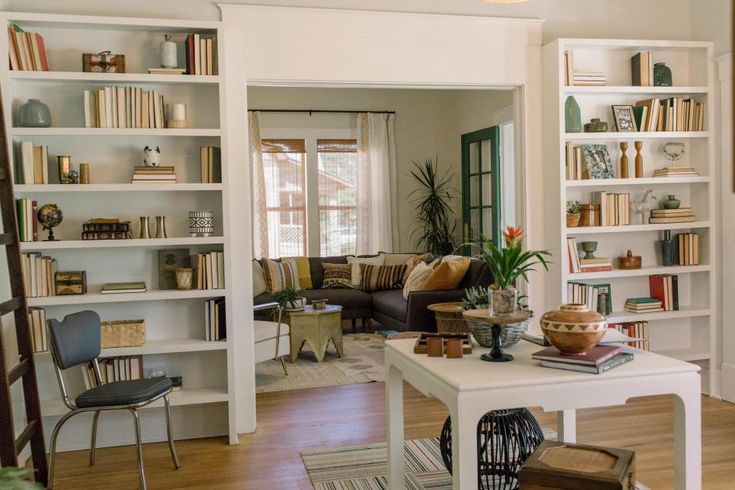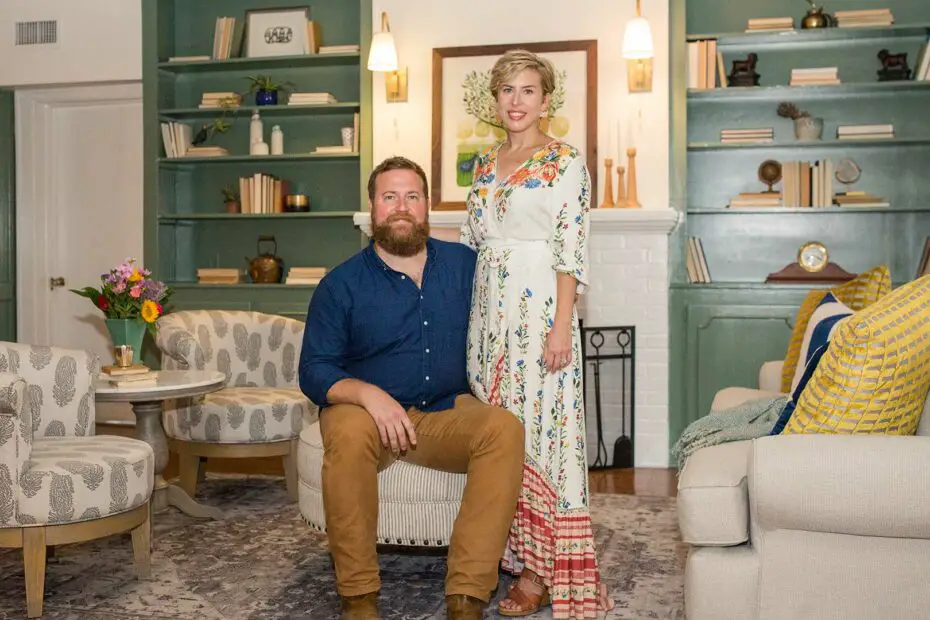To truly delve into someone’s personality, take a glance at their bookshelves. This became a popular quarantine pastime, especially during Zoom celebrity interviews, where viewers attempted to decipher the significance of each book and trinket. (Spotting “The Catcher in the Rye” and every Shakespeare play? Must be a fan of…required reading.)
However, what’s the story when a person arranges their books with pages exposed and spines turned toward the wall? It results in a neutral, minimalist appearance—and it undeniably stirs up bibliophiles. Since its introduction in 2017 as a controversial design trend, people have debated whether this style is aesthetically pleasing or downright sacrilegious. The intriguing part, though, is that this wasn’t meant to be a trend at all; it originated as a TV show secret that gradually infiltrated mainstream decor.

If you’re an avid viewer of design shows, you’ve likely observed the consistent styling of books in a particular way during major reveals—pages displayed, covers and spines concealed. While this approach contributes to a cleaner shelf aesthetic, the main reason designers repeatedly employ it is rooted in copyright concerns.
Explaining this, HGTV designer Erin Napier shared on her blog, “The network would have to get copyright clearance from every single title in order to display them.” Considering the multitude of books typically featured on shelves and the intricate process of obtaining rights, exacerbated by the tight timelines of TV production, it becomes more practical to opt for a spine-free presentation.
This need for copyright clearance extends to artwork as well. Consequently, some designers choose to create their own art for the walls or collaborate with local artists with whom they have established relationships and can easily secure approval.
In everyday home decor, it’s less common for decorators to recommend showcasing books with pages exposed, precisely for the reasons bibliophiles bemoan: it becomes challenging to identify individual books, turning leisurely reading into more of a task. Most designers strive to strike a balance between form and function, and once the cameras stop rolling, the books typically return to their traditional positions.
As this aesthetic gained popularity, it cultivated its own following, evolving into a trend in its own right. This approach is particularly fitting for titles you seldom read but can’t bear to part with. Yet, if you frequently utilize your bookshelves and desire a more neutral and cohesive appearance, there’s an alternative. Consider crafting your own book covers using craft paper, reminiscent of the days when you adorned your sixth-grade textbooks. It retains a sleek look while proving to be more practical for day-to-day functionality.
And we completely understand if, amidst all this crafting, you find yourself tempted to sketch the ‘Cool S’ on each cover.










